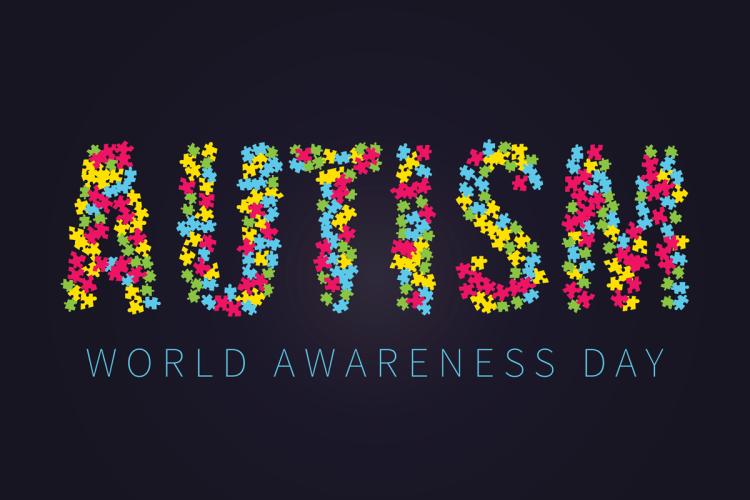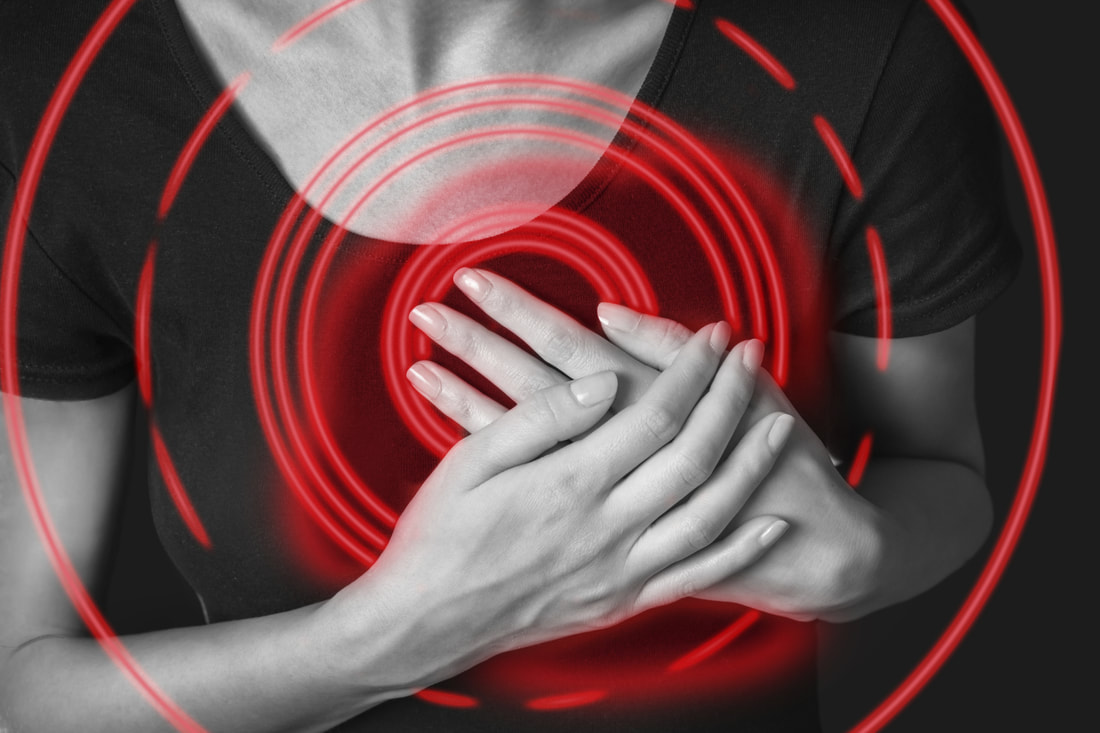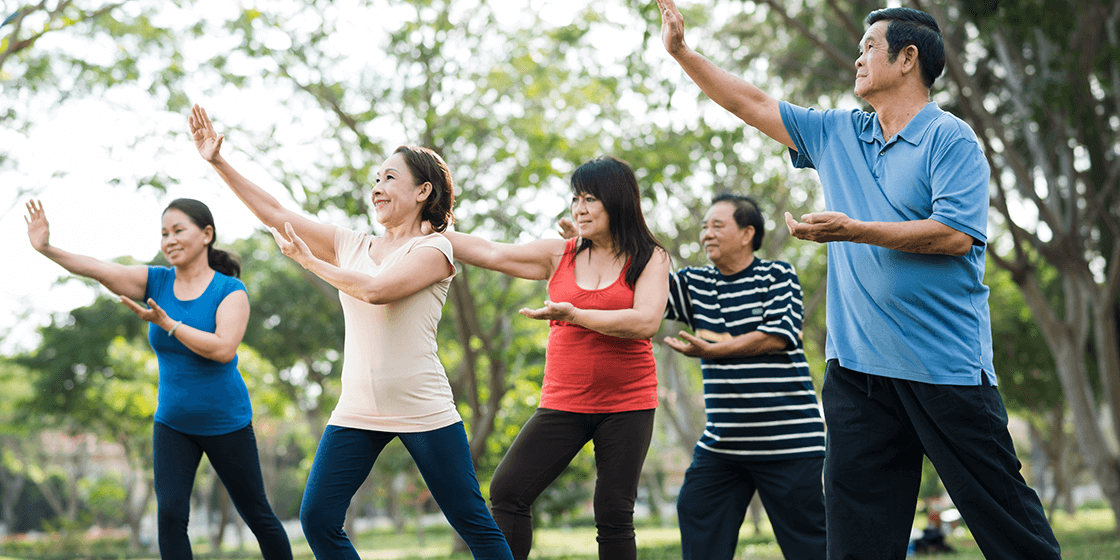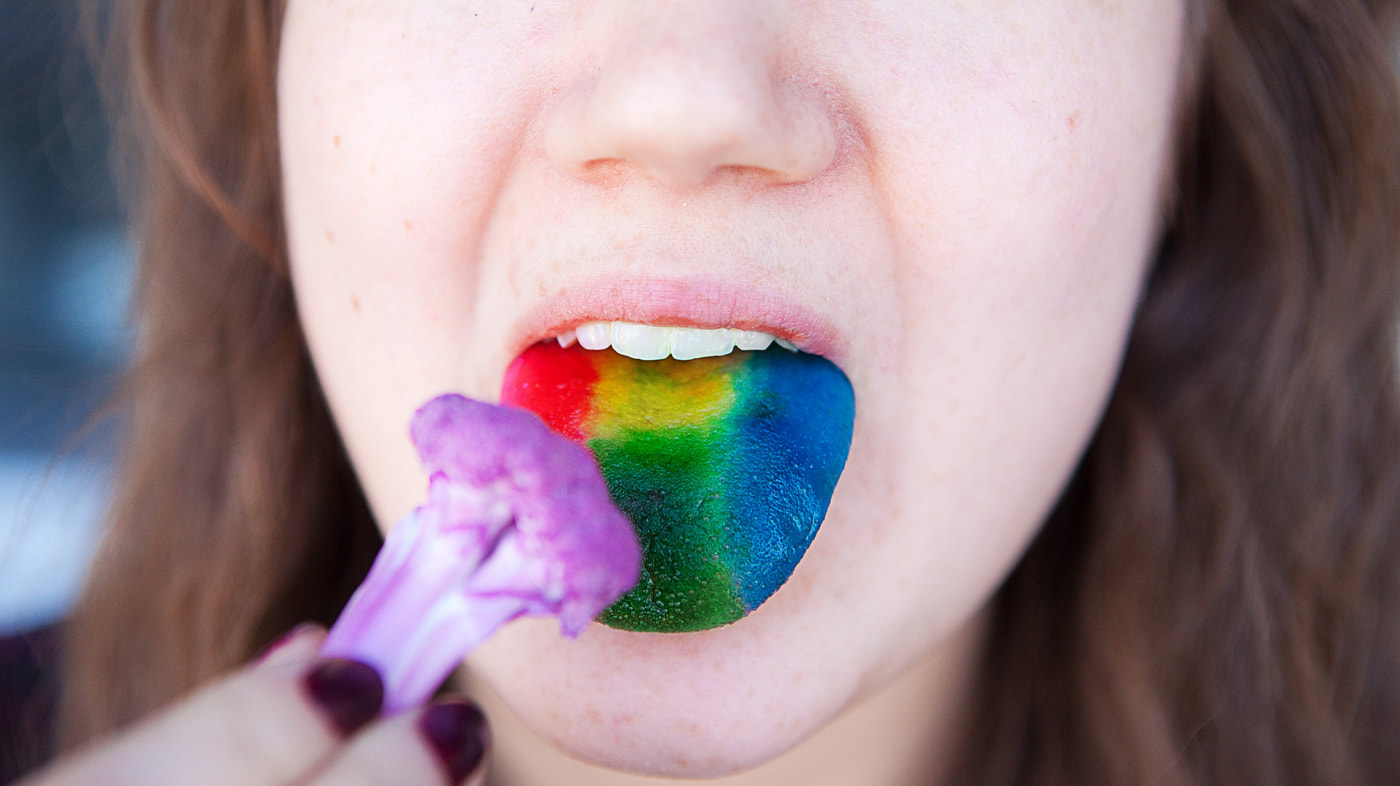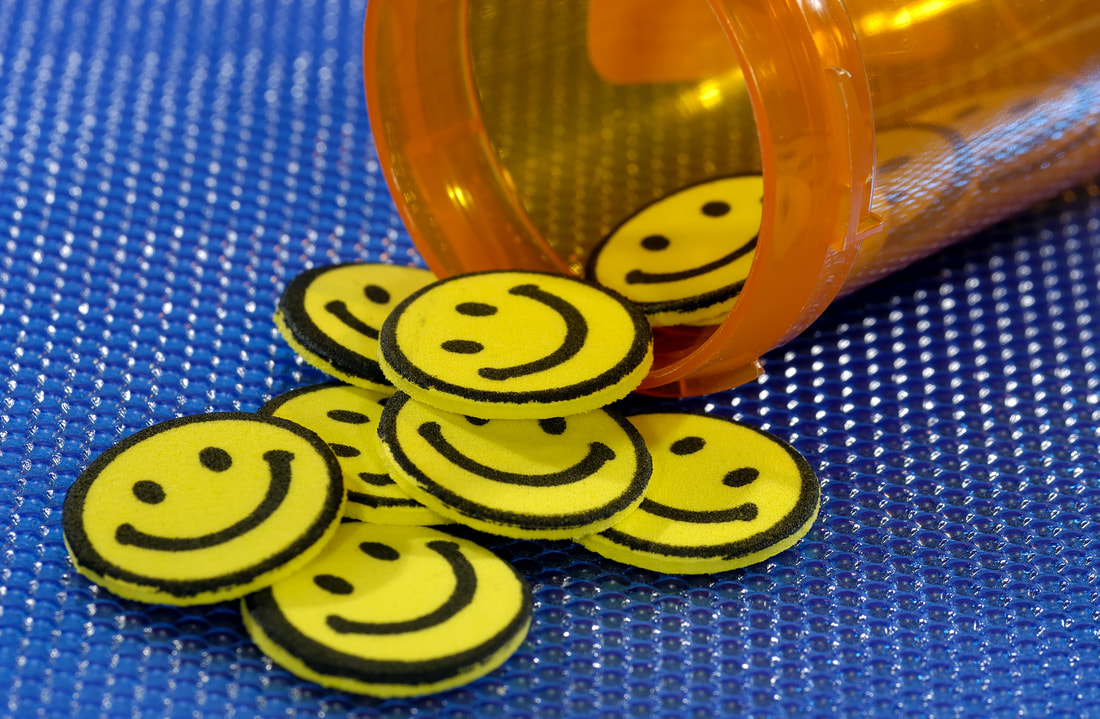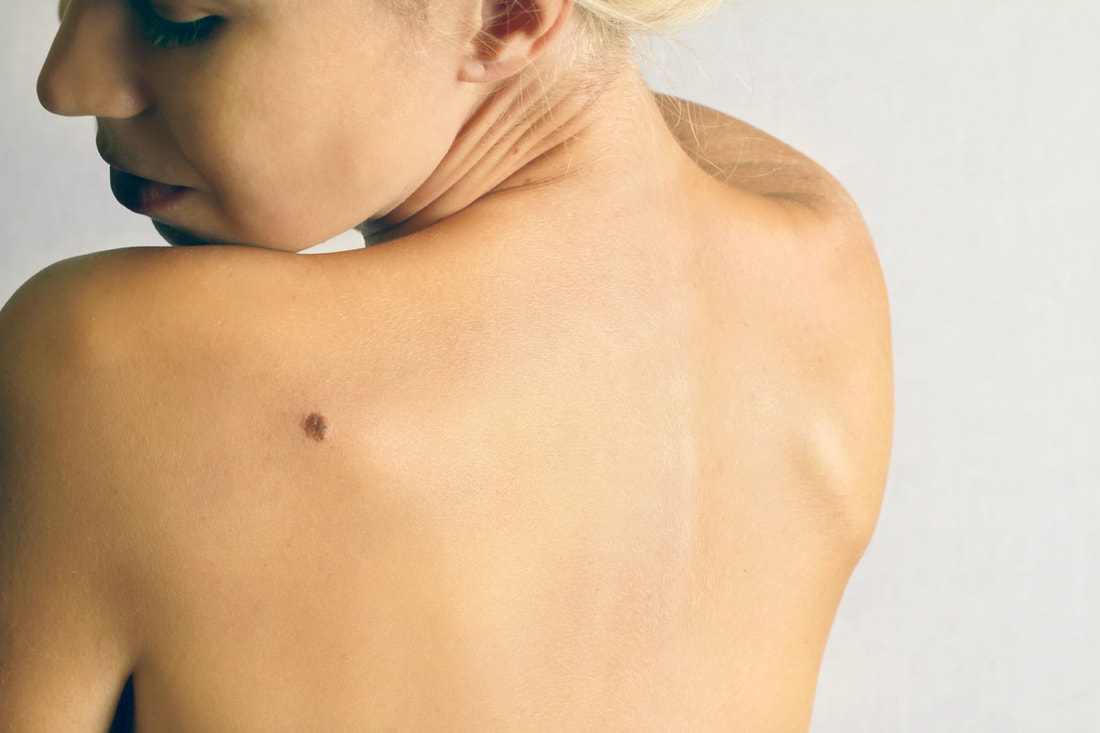|
April 2nd is declared as World Autism Day, one of the only four official health-specific UN days. Autism is a neurological problem that starts during childhood, without any gender, race or socio-economic status discrimination. This year, the day will focus on the importance of empowering women and girl children with autism as statistics show that such female are denied even primary education when compared to autism-affected males, have a lower rate of employment in comparison with their male counterparts, face an increased risk of experiencing physical, sexual, psychological and economic violence than men and have great barriers in receiving sexual and reproductive health services.
Any Leftover Clues? There is no one single cause reasoned out behind the development of autism in children and it is more likely a combination of genetic and non-genetic (or environmental) causes that result in autism. Mostly, autism runs in the families and when either of the parent is a carrier of the gene (even when they are not affected by autism), they are more likely to be passed to their children. When we say environmental factors can cause this disorder, we are talking about increased parental age (either parent), extremely premature baby, low birth weight infants or multiple pregnancies. While certain studies tried to link vaccinations with autism, it has been ascertained that rubella, mumps or measles vaccines can never cause autism. Signs & Symptoms of Autism Signs of autism vary in every child, some might show signs within few months of birth, some children seem to be normal until after 24 months or so while some other children appear to grow normally until around their 18 or 24 months of age and then stop acquiring new skills. Common signs of autism at any age include:
The early the diagnosis, better it is for treatment. Parents, children and the therapist must work in synchrony to offer relief and behavioral therapy to the autistic child and make his/her quality of life better. In certain cases where the degree of the disorder is too much, the physician might add in some medications to bring down the effect. Parents too are given separate training sessions on knowing how to handle their children and make their life better. Autism rates are high in all countries worldwide and insensitivity or lack of understanding of the core problem can have devastating effects on the individuals, their families and communities. Women feel responsible for all activities in their family and overburden themselves many-a-time subjecting themselves to psychological stress. A new study shows that such stress can impact women in a harsh way, even more when she suffers from heart disease.
Earlier studies have already proved that women are likelier to develop myocardial ischemia (abnormal restriction of blood supply to heart muscle) than men when they perform mentally stressful tasks. The new study focuses on the underlying differences between men and women when analyzing the cause behind reduced blood flow. Stress-led Ischemia The new study included 678 people with heart disease and these people were asked to speak in front of an unfamiliar group of audience. Before and after the speech, every individuals’ blood pressure and heart rate were measured, heart scan was taken and constriction of tiny arteries supplying blood to their fingers were measured to observe the tightening of arteries during the process. While mental stress led to restricted blood flow in both men and women, the underlying reasons for the same were very different:
The best advise to any woman would be to take care of herself first. Only then she would be able to take care of people around her in a positive way. It is crucial that the woman cares for her body and mind, gives herself a well-deserved break between hectic schedules and enjoys ‘me’ time with relaxing therapies or techniques such as meditation and yoga. Parents are the first role model for any child. A child learns faster when he/she sees something happening right in from of his/her eyes instead of being preached every single ideology. Children, as young as 15 months old, learn perseverance from watching their parents and try harder when they see their parents struggle hard to succeed at a task. A new lab experiment proposes the fact that determination and strength are not particularly inborn qualities, but are qualities learned from a very young age.
The experiment found that toddlers try hard to make their toy work if they first witnessed an adult strive and strain to complete a difficult chore in comparison to an adult completing a chore effortlessly. This is good news for parents as they usually strive to make things seem effortless at times even when they have put their heart and soul into that specific work. This study disproves the need for such behavior and encourages parents to keep going with their good work of putting efforts and sweating it out to achieve a task. Infants watch parents’ behavior and learn from what they do. Read more on how children hail their parents as superheroes and role models by visiting the website www.firsteatright.com. The Experiment Toddlers were exposed to two different scenarios in this experiment: One set of toddlers watched an adult struggle for 30 seconds before accomplishing a task while another set of toddlers watched an adult complete the task at hand thrice within the 30-second time. After this experience, toddlers were given a toy that appeared to play music. The toy had a big button on top that appeared like it could play music once pressed, but it actually did nothing. The researchers looked for the number of times the babies pressed a button before giving up. They found that babies who watched adults struggle and succeed to achieve a task tried about twice as many times as those who watched an adult effortlessly succeed at the given task at hand. They ruled out imitation as a reason as the tasks given to adults and babies were extremely different. When most adults feel that persistence is an inherited trait, this experiment proves otherwise where we can learn perseverance based on social context. The Conclusion Although talents and abilities are important, beliefs and mindsets motivate children more than anything else. Smartness and skillset are pushed to the backseat and your approach to difficulties, challenges and setbacks occupy supreme priority here. Instead of leaving the child with a mobile phone or television screen when its chore time, if parents make their kids watch them clean the house or cook food, kids learn better. Kids are inherently interested in what their parents are doing, particularly at that age. When they see their parents/grandparents work around the house to complete the household activities, kids might learn a thing or two about working hard. You sketch out a weight loss plan for yourself or work with a dietitian/nutritionist to lose weight; you work vigorously with your goal in mind skipping all those fancy snacks and late-night party drinks; you sweat out vigorously at the gym or walk hard. But you don’t lose weight as expected! This kind of a scenario is very common among females. It is not only harsh on the individual, it is frustrating from the trainer’s point of view too! Some trainers might even believe that their clients are bluffing on their diet plan and not putting in enough effort as portrayed to the outside world.
While it hurts to believe that hormones can contribute towards health challenges, ample evidences point out so! This does not mean that certain clients with certain increasing/decreasing hormone content cannot lose weight. It only points out that these clients find it extremely difficult to lose weight, but the loss is finally worth the wait! In such cases, it is better that the woman involved meets her physician. Female Sex Hormones Estrogen & Progesterone These are the primary female sex hormones that counteract and balance each other’s effects. Estrogen takes care of the first half of menstrual cycle, gives the woman her curvy hips and breasts, causes mood swings and regulates social behavior, appetite, sexual desire, sleep and digestion by regulating serotonin levels. Progesterone helps in overall well-being, calming and soothing you when needed, helping your thyroid glands to function efficiently, raises body temperature and is a natural diuretic. These two hormones are like a couple on the dancefloor who need to match their steps to synchronize their movements correctly. If either of the couple goes overboard and performs more than needed, the dance goes haphazard and likewise is the relationship between these two hormones. When one of the hormones is secreted more/less than what is essential, it causes an imbalance and leads to many problems. Having too much estrogen in comparison to progesterone (estrogen dominance) can cause weight-loss resistance and makes the weight-loss process tiresome and frustrating with ample challenges. Estrogen dominance is not a standalone factor as it is not defined by a particular amount of estrogen in the body but only a comparative factor with respect to progesterone. A diet low in fiber, increased alcohol intake and chronic stress contribute towards this dominance which is visible with:
Recognizing Hormone Imbalance We cannot correlate symptoms with hormone imbalance until we get some basic lab tests done. Although conventional physicians might recommend going for a blood test, there are plenty other options including saliva and dried urine testing. Also, it is necessary that the woman gets both, her estrogen and progesterone levels checked as any amounts of estrogen will not suffice when there is little or no progesterone to balance it out. Other Hormones Contributing Towards Imbalance Apart from the above two, thyroid hormones, cortisol, insulin, leptin and many other hormones can affect fat loss/gain. Thyroid hormone too plays a critical role in weight gain/loss depending on many factors. Read more on how thyroid hormone can increase/decrease weight of an individual by visiting the website www.firsteatright.com. Leptin is another important hormone than affects fat metabolism as it is mainly secreted in adipocytes (fat cells) and is responsible for satiety. Increase in leptin levels decrease the satiety feeling in the body. Insulin works similar to leptin as increased insulin levels can lead to insensitivity to the same. Cortisol, the stress hormone, is the major player in many of our systems nowadays due to never-ending stress increases. These stress hormones make us store fat, mostly in the belly. Increased cortisol levels can also lead to sugar addiction, depression and increased foods intake such as cookies and processed foods. The Shocking Enemy Exercise is the best practice for weight loss, but not for some women! High-intensity exercise can sometimes have a negative effect on weight loss due to the stress placed on the adrenal gland. When individuals become exhausted in an hour or two after exercise due to lack of energy stores, this can cause hormone imbalance as well. Exercise which is needed for health and hormone balance can sometimes cause stress thereby increasing cortisol levels and inducing severe fatigue. People who experience this phenomenon feel sapped out of energy and tired instead of being energized after an exercise session. People who want to overcome this hormonal imbalance cannot simply achieve it by juggling activities. Such individuals can:
A philatelist collects stamps, a numismatist collects coins of different countries and some individuals love to collect vintage cars or clocks. Some other individuals are quite different-though they don’t collect stuff, they find it difficult to throw away unwanted things like magazines, newspapers, old clothes and much more scared that they might need these some day in their life. The things keep piling up such that it becomes difficult to even sit down, move around or eat together inside their house. This is typical of a person who suffers from hoarding, a mental disorder.
Hoarding Vs Collecting Collecting things is different from hoarding in that the collection is well-ordered and easy accessible, whereas a hoard is extremely disorganized, takes up most of the space in the house and often lost as a needle in a haystack. The examples given at the start of this article are of collecting while the last one is typical of hoarding. Hoarding becomes a disorder when:
Individuals with hoarding disorder are a challenge to treat because they never see hoarding as a problem nor do they realize that it can impact/wreck the lives of their family members. The rare few who realize this problem are hesitant to seek help as they are ashamed of themselves. If we know someone who is addicted to hoarding, it is better that we gently ask him/her to get it consulted as this problem can cause health and safety issues beyond loneliness. We have to realize that people with this disorder don’t have the decision-making ability anymore and when someone steers them towards the right solution, it makes life simpler for them. What Stimulates Such Freaky Activity? If you look at the larger picture, there is still no valid cause behind such actions taken and no diagnosis available to track this disorder. Starting during adolescence or teen years, the disorder might aggravate over the decades. Hoarding disorder might also be symptoms of another problem- dementia, mobility problems, mental depression, obsessive compulsive disorder (OCD) or psychotic disorder (schizophrenia). Read more on mental disorders at www.firsteatright.com. The main reason why people hoard is that they believe that these things might come in handy sometime later in life. They might feel that it has sentimental value, too good a bargain to ignore or irreplaceable. The common reasons behind the big ‘why’ include:
Some people hoard a multitude of items while some others might hoard a certain few things only. Commonly hoarded items include newspapers, books, clothes, letter, leaflets, bills, receipts, household supplies and containers. Hoarding ample data in mails is the recent addition to the list. Some people are so reluctant or scared to delete mails thinking that they will be needing it in the future and hence, never delete their mailbox items. Treatment There is no effective treatment available for hoarding disorder and till now, cognitive behavioral therapy is the only evidence-based treatment available for this problem. Through these talk sessions, although the therapist might not be 100% successful in motivating the person to throw away all the clutter, the affected individual might become aware of the problem at hand. Only if the biological cause behind this problem is uncovered, can effective solutions be provided. Maintaining cardiovascular health should be the number one priority for individuals undergoing stenting or having a heart attack. Cardiac rehab programs are an excellent way to fulfill this requirement. Sadly, not too many doctors recommend their patients to enroll in such programs and also, more than 60% of eligible patients themselves don’t choose to attend such cardiac rehabs. Other contributing factors for such negative response include time, travel, expenditure and the exercise part that some people find it too tiring. For such people, the Chinese practice of tai chi is the best alternative as it not too stressful physically and helps to reduce overall stress. There are others methods to reduce stress levels and stay relaxed and to more about them, please visit the website www.firsteatright.com.
Gentler Alternative to Heart Health Tai chi is a gentle exercise form that includes a series of flowing movements and breath awareness. Around 29 people who refused to take up traditional form of cardiac rehab were signed into tai chi classes twice a week for three months (lite group) or three times a week for six months (plus group). Apart from the mild muscle strain that was experienced at the start of the program, tai chi was 100% safe and reliable. Each of the individuals attended two-thirds of the classes and were eager to recommend it to a friend. Some various advantages of tai chi include:
As you start practicing this art form, you will slowly start reaping its benefits. Set a goal of practicing tai chi for at least one-two hours every week by attending classes along with home sessions for at least 150 minutes a week. Being a fun-filled and adaptable exercise form than cycling or running on the treadmill, any individual who takes up tai chi is sure to stick to it for a long time. A good night’s sleep is worth a good day’s energy. People love to sleep through weekends, get up late-afternoons and laze around. Although this is not 100% acceptable, it is not extremely unhealthy when you do it rarely. New diets keep springing upon and the latest is the ‘Sleeping Beauty’ diet. While the term sounds fascinating, alluring and catchy, the diet is not!
This diet is based on taking sedatives to make you sleep through the day and all through the night to prevent you from eating. Too much or too little sleep can promote weight gain. Speaking practically, how can one survive through such a diet from the work perspective? If we spend all the time sleeping to lose weight, we will absolutely have no time for living our life, exercising, socializing or doing anything else. Too much of sedative can lead to overdose, addiction and serious health damages as one has to use higher and higher doses of sedatives to get the desired result. Such people can also go into depression as they are sleeping and have no time for social gatherings. This can affect their mood and pave way for eating disorders too. Read more on how eating disorders affect our day-to-day life at www.firsteatright.com. Ghrelin-Leptin Link Ghrelin and leptin are hormones linked with the quantity of food that an individual consumes. Ghrelin affects appetite while leptin controls the amount of food that goes into your tummy. Improper sleep can elevate ghrelin levels and decrease leptin levels. Being awake increases your risk of overeating too. This does not mean that you do the exact opposite and sleep through the day. Sleeping beauty diet is of utmost concern as it neither includes a bout of quick physical exercise nor it talks about eating healthy food. Alas, how would you find time for these if you sleep all day? Basically, any diet that promotes weight loss via supplements, pills or powders without adding a general dose of exercise or diets that ask you to skip an entire food group are unhealthy and must never be followed. Rearing kids is an art and you specialize in this art as you practice. Most people assume kids to be robots who follow their commands to the ‘T’. Right from making your kid brush his/her teeth to eating habits, caring for a child is challenging and you need to be extremely patient and creative. Even pediatric nutritionists face difficulties in growing children and it is sheer experience and flexible approach that you develop apart from theoretical knowledge that can help you reap the fruits. Every child is different and needs a different approach to be reared well. Also, nutritious food does not guarantee a healthy kid and health is dependent on various other factors as well. For a list of all the important factors that determines a person’s health, please visit the website www.firsteatright.com. Listed here are few tactics that can help you feed your child in a better way: Simplify Meals As a mom or dad, you might be eager to offer the best of everything for your children and cook the healthiest meal possible. But when your kid sees that the food on the table looks unfamiliar, he/she is sure to refrain from eating it. It’s understandable that you wish to expose your kid to all good foods, but its important to gradually introduce them to your children alongside familiar foods that your child likes to eat. The best way to expose your kid to variety and nutrition is to keep the food simple and familiar. Balance Foods A well-balanced meal that supplies the proper combination of fruits, veggies, whole grains, proteins and fats alongside minimal portions of sweets and treats is the priority for parents. Such meals help to add nutrition and good health while suppressing the desire to overeat or crave for certain foods. Keep the Proportions Right Many children survive on foods that are rich in added sugars. There must be room for these foods too, but ‘how much’ is the question here. Follow the 90/10 rule where 90 percent of foods eaten in a day are healthy and wholesome and 10 percent are those that include foods such as sweets and treats. This helps kids enjoy their daily eating schedule as well as nourish from the foods they eat. Avoid Constant Worrying Parents worry all the time regarding their kid’s eating habits, weight and height. They feel that unhealthy eating habits might cause their children to suffer from weight gain, nutrition problems and so on. Hence, we try to impose stringent restrictions as parents and that makes the child try sneaky ways to get access to their favorite junk foods. Chaos is the Way if Not Properly Fed Some children are constantly in the kitchen asking for food every now and then. They grab some chips, eat a biscuit or two and drink juices. When a child complains of hunger always, it is an indication that the food system and feeding pattern are not working out as expected. This might accustom the child to eating unhealthy junk foods. Parents must curb such acts by focusing on providing the child with well-balanced foods at right timings with a regular daily schedule. Variety is the Spice of Life Eating the same food every day bores an adult and kids are no exception to this. Ensure that you include pleasant surprises to your kid’s meals every now and then which will keep children entertained as well as thrilled to try the new foods. Swap their post-school snack routines daily and include one different nutritious food in their platter at snacks time. Kids are captivated by what they see. Parents can deceive children into eating healthy foods by using creative ways to present them. Exposing children to new foods is the right way to make them like, taste and familiarize themselves with a wide variety of foods. Involve Kids in Decision Making Don’t wrongly assume that making decisions are solely an adult’s job. Kids love being involved in every action that takes place in the house. When they are asked for their suggestion on the menu ideas, given a choice to choose between two snacks or allowed to help in the kitchen doing small chores, they feel that their presence is integral and important. Allow kids to have a say in food matters as it is a part of their developmental process.  'How' You Feed Can Determine a Kid’s Healthy Eating Habits 'How' You Feed Can Determine a Kid’s Healthy Eating Habits Focus on ‘How To’ Feed While parents focus on ‘what’ to feed, they miss out completely on ‘how’ to feed their children. Parents miss out on the interactions that happen around their food time and only concentrate on what goes into their kid’s mouth. Such pressure might make a kid become a picky eater, overeat or even refuse to eat at all sometimes. Also, bribing children with food rewards, for instance promising a dessert when the vegetable salad is completed, promotes the child’s interest in desserts and makes veggies less palatable over time. How you feed your child has the supreme power to determine their healthy eating habits. Smoking causes cancer. Smoking kills. We are aware of these statements. But are you aware that smoking increases the risk of Type 2 diabetes?
Diabetes is a disease in which the body’s blood sugar levels are abnormally higher. People with diabetes cannot make/use insulin efficiently, thereby causing glucose to build up in the blood without allowing it to reach the cells. Diabetes can be Type 1 or Type 2 out of which Type 2 diabetes is the most common form. India has almost 10% of its population living with diabetes. Research puts forth the fact that smoking is a direct cause of Type 2 diabetes. As a matter of fact, smokers are 30-40% more likely to develop Type 2 diabetes than nonsmokers. Smoking & Diabetes Diabetes is controllable and manageable, but smoking aggravates and worsens the disease leading to further complications. Diabetes patients who smoke are at a higher risk for disease complications than nonsmokers with diabetes. Such complications include:
If you have diabetes, are prone to diabetes, at a prediabetes stage or even if you have no diabetes please stop smoking. This will benefit your health right away. Whatever type of diabetes you may have, smoking makes it more difficult to bring it under control. Once you quit smoking you can immediately notice the difference in blood sugar levels. Eating healthy and nutritious foods, leading a healthy lifestyle, exercising regularly and keeping yourself happy are the keys to a healthy body without diabetes, blood pressure or any other disease on this earth. If you are interested in pursuing a healthy lifestyle, please get in touch with registered dietitian nutritionists at www.firsteatright.com to help you in this important phase of life. Blood sugar levels of some individuals increase in the morning due to the body’s release of certain hormones. This is a normal phenomenon that occurs in the early morning hours, between 4 a.m. and 8 a.m. in diabetic people.
In general, dawn phenomenon is experienced by all individuals and it is only the extent of blood sugar levels that change. The only difference is that people with diabetes might experience increased symptoms due to rise in blood sugar levels. Effects of Dawn Phenomenon on Diabetics The dawn effect happens when hormones such as cortisol, glucagon and epinephrine are released by the body which in turn trigger the liver to release glucose. Unusually high blood glucose levels occur 8-10 hours after going to sleep when people have diabetes. The reasons for such high early morning blood sugar levels include:
The medication and treatment for this is similar to normal diabetes treatment procedure. By synchronizing your diet, medication and physical exercise properly the symptoms and problems can be kept under control. To adopt a healthy diet that can help maintain blood sugar levels, get in touch with a registered dietitian nutritionist at www.firsteatright.com. Dawn phenomenon might require some other additional changes to be incorporated to prevent any unwanted effect on body health. Some simple steps that can be taken by people experiencing dawn phenomenon include avoiding skipping meals and medications, refraining from eating carbs before bedtime, consuming medications close to bedtime, avoiding taking medicines during dinner and by reshuffling your medications entirely or changing a few doses after consulting your physician. You can even do some light physical activity such as walking, slow jogging or yoga after dinner. Symptoms & Severity Tiredness, vomiting, nausea, lingering thirst, weakness and disorientation are some of the common symptoms of high blood sugar levels. It is needed to correct these increased sugar levels by meeting a physician before it can result in dangerous consequences such as nerve or blood vessel damage, organ damage and ketoacidosis (over presence of acid in bloodstream). Effect on Type 1 & Type 2 Diabetes Actually, more than the diabetes type or the treatment plan, it is the individual who is pivotal for treatment. Individuals with type 1 diabetes might get a change of dosage or insulin type to account for changes overnight. People who wear an insulin pump might get their pump adjusted such that they get their extra insulin delivered in the morning without fail. Water is the elixir of life. It is good for health, weight loss, radiant skin and what not! The reason why water holds so much prominence is due to the fact that we need water to live, regulate body temperature, keep muscles and joints flexible, flush out waste and keep body cells healthy as they are made up of water.
Physicians, nutritionists and dietitians recommend their patients to drink ample water as it helps them to consume less food, eat more slowly and replace sugary beverages. Never once have we ever heard our doctor advise us to drink less water. But every rule has an exception and so does this rule! Certain groups of people are asked to drink decreased quantity of water:
Understand basic rules: The quantity of water you need depends on your body weight, physical activity level and climate. The general rule is for men to drink around 3.7 liters water and for women to drink 2.7 liters. Drink water whenever you feel thirsty and don’t keep gulping every now and then simply for the sake of drinking. Consider electrolyte intake: The right quantity of water for your body depends on your own body, environment, diet, activity level and your electrolyte levels too. Note that the issue here is not excess water consumption but the consumption of excess water in the absence of enough electrolytes consumption to keep your body in fluid balance. Individuals who heavily sweat such as athletes or those involved in more than 60 minutes of strenuous activity must ensure to replace lost electrolytes and fluids due to sweat. Diagnose symptoms: Urine coloration (pale yellow) is a clear indication of enough water consumption. Sometimes during intense exercise sessions, hyponatremia is preceded by symptoms such as headache, muscle weakness, vomiting and confusion. Meet an authorized personal: If you feel that your liquid and electrolyte consumption don’t balance well, meet an RDN who can help you figure the right proportion for your body composition. Athletes too can get in touch with a sports nutritionist to meet their fluid needs. The best way to get in touch with a sports nutritionist/RDN is to visit the website www.firsteatright.com. Most people drink appropriate quantities of water as a reflex action. Also, practically it is least impossible to drink exceedingly high quantities of water to the point that it can cause harm to your body. France is synonymous with red wine and the French paradox is an often-argued one. According to this paradox, despite increased consumption of saturated fat, French people die less of coronary heart disease due to the consumption of red wine. This fantasy has been spoken about time and again that, many individuals even today believe that drinking red wine can ward off cardiovascular disease. People in the US, UK and France consume foods high in saturated fat, but the mortality rates due to coronary heart disease was more in US and UK compared to France, according to studies. The only difference is that French people consume more of red wine and it automatically boils down to the fact that red wine is a heart savior. We know that red wine contains a certain quantity of protective polyphenols (resveratrol, for instance that is present in red grapes) that can explain this paradox. The beauty here is that, mortality rates differed between cities within France itself regardless of cheese consumption (in fact, the city with decreased CHD mortality rate displayed highest cheese consumption). Propagating the Story to Boost Business Every time there is decline in wine consumption, the French paradox story is revived to promote red wine sales. These propagandas were so effective that even teetotalers started drinking wine fearing that they might die from heart attack if they don’t drink. While polyphenols are advantageous, the quantity of wine needed to cause this heart-saving effect is negligible compared to the ill-effects of alcohol consumption. Moderate consumption of alcohol can:
 Toast in Style to Celebrate Toast in Style to Celebrate The Paradox Remains a Paradox In the city that had the minimum CHD death rate despite increased cheese consumption, a noteworthy point is that the residents ate bountiful veggies, fruits, bread and vegetable fat with decreased consumption of butter. In short, they consumed more of dietary fiber and less saturated fat. Saturated fats are one of the many dietary factors that affect cardiovascular risk and increasing/decreasing saturated fat intake is not going to drastically alter the risk. It is also utterly absurd to comment that drinking a few glasses of red wine can make you healthier. To conclude, we can say that what we need is a balanced diet for a healthy body. Plenty of fruits and veggies with a bit of cheese and butter here and there is good for you. If you are apprehensive of following a balanced diet on your own, it is better to get in touch with a registered dietitian nutritionist at www.firsteatright.com who can plan a well-balanced healthy meal plan suiting your requirement. Enjoy a toast with a good glass of French wine occasionally to stay happy and celebrate your special occasion. Indigestion is a feeling of pain or discomfort in the abdomen. Heartburn is a burning sensation experienced behind your breastbone when acid from the stomach moves up to the chest or throat. Indigestion and heartburn sometimes occur together.
Reasons Beyond Food While food is mostly blamed as the primary reason for indigestion, there may be other reasons too. Stomach produces acids when a person eats. This acid can rarely create a discomfort in your stomach lining, top part of the bowel or the oesophagus. This acid causes the heartburn which can persist for prolonged time periods, even after eating a big meal. Other factors that can trigger indigestion include: 1. Obesity increases the chances of indigestion as there is increased pressure inside your stomach causing an acid reflux. 2. Indigestion is common during pregnancy due to the hormonal changes experienced and at later stages due to the growing fetus pressing against your stomach. Almost 75% of women experience indigestion during this period. 3. Smoking and alcohol have a negative impact on health and indigestion is one of the side effects. The chemicals inhaled from the smoked cigarette can cause acid reflux. Alcohol increases the risk of indigestion to an even greater extent as the stomach produces more acid than usual which affects the stomach lining. 4. Stress and anxiety 5. Hiatus hernia, where the stomach pushes up into the diaphragm. Heartburn is the only symptom and you might not even link this symptom with hiatus hernia. 6. Eating greasy or spicy foods, close to bedtime, while lying down or overeating are contributing factors of indigestion. 7. Indigestion can also be due to other digestive conditions such as constipation, gallstones, celiac disease, gastritis, peptic ulcers, pancreatitis, GERD, stomach cancer and intestinal blockage. 8. Medications taken for high blood pressure, asthma, heart problems, arthritis, osteoporosis, anxiety, depression, pain, muscle spasms and drugs used for hormone therapy can result in indigestion. Although indigestion is not a grave problem, its symptoms can cause discomfort and pain making you miss your office or school routine. Prolonged indigestion needs immediate medical attention. Simple diet changes and lifestyle modifications can ease indigestion. Quitting smoking, restricting alcohol consumption, losing weight, keeping yourself calm and controlling portion sizes are some other reasonable changes that can be made in our lives to decrease the effect of indigestion. Get an appointment with a registered dietitian nutritionist at www.firsteatright.com to get a healthy diet plan that can curb indigestion. Evergreen memories of physics and chemistry labs from our school or college days are etched in our minds. Our experiments rarely included the ‘laughing gas’ or nitrous oxide, but I am sure most of us giggled about this ‘inhalant’ almost during every lab session. Inhalants Around Us Never once do parents talk about drugs while their kids hang around them, but don’t realize the dangers of substances found in their own households. Inhalants are chemicals that people inhale deliberately to get ‘high.’ People don’t think about them from the perspective of drugs as they are also not meant to be used that way, although inhaling their chemical vapors can cause mind-altering effects. Inhalants generally fall into one of these four major categories:
Sniff or Snort
People use inhalants by breathing the fumes through their nose or mouth, either by sniffing, snorting or huffing. Within seconds of inhaling, the person feels intoxicated and experiences similar symptoms as that of alcohol, such as slurred speech, euphoria, dizziness or lack of concentration. Some people also experience hallucinations and delusions. In rare cases, inhalants can also cause unconsciousness as they produce anesthesia. The above-said effects are only short-term ones and long-term effects include serious problems such as damage to nerve fibers or damage to brain cells. Damage to vital organs and systems such as the heart, liver, muscles, blood cell production and nerves, apart from the brain, are caused with regular use of inhalants. This is different from smoking in that, damage to the organs is not reversible even if the person stops using inhalants. If you are addicted to smoking and looking for ways to stop it, www.firsteatright.com is the best place to find solutions to quit smoking once and for all. Using an Inhalant or Not? You can tell that a person is using inhalants when you notice these symptoms:
Addiction is not common as in the case of other drugs or alcohol but rarely addiction to inhalants too occurs. It is mostly young adolescents who use inhalants profusely compared to other groups of people. These individuals continue usage well into adulthood. An individual’s skin is mostly covered with hair and hair follicles. The hair grows in varying thickness and size according to its place of origin. For instance, on top of our head the hair growth is long and thick, whereas on other parts it is thin and transparent.
Hairy nipples are common in women and is rarely a cause of concern as it does not indicate any health issue. In some women, the hair becomes long, coarse, dark and might signify something more serious which makes the individual to seek a physician’s advice. While we are not quite aware of the prominence of hairy nipples among women as most of them don’t report this issue due to embarrassment and try managing it by themselves, it is likelier for the hair that is fine and transparent to turn dark and coarse with age. Underlying Causes There are several causes for nipple hairs to grow and those include: Hormonal changes: Women undergo tremendous hormonal changes during puberty, pregnancy and menopause mostly and these changes can cause various symptoms of which hairy nipples might be one of them. Increased male hormone production: Hormone imbalances, especially overproduction of testosterone can cause hair growth along with other symptoms such as oily skin, untimely stop of menstrual periods or male pattern baldness. Polycystic ovary syndrome (PCOS): PCOS is due to hormone imbalance and it affects the functioning of ovaries. Infertility, irregular periods, ovarian cysts and excessive hair grown in unusual places such as nipples are common. 1 in every 5 women are victims of PCOS nowadays. PCOS can be treated without medications by following a healthy lifestyle and staying on a healthy weight. Fix an appointment with a registered dietitian nutritionist at www.firsteatright.com who can help you start embracing healthier lifestyles. Medications: Certain medicines such as testosterone, glucocorticosteroids and similar other drugs can cause nipple hair. Cushing’s syndrome: This is a condition that occurs due to excess cortisol production (hormone imbalance). Symptoms include increased hair growth, abnormal menstruation, big purple stretch marks, increased blood pressure, weakness in upper arms and thighs, decreased libido, fertility problems, mood swings and increased sugar levels. Treatment Mostly, treatment for hairy nipples is not for health reasons but women try to get rid of it for cosmetic purpose. You can trim, tweeze, shave or wax the nipple hair or choose laser hair removal treatment option. If the problem is due to hormone imbalance, a physician can prescribe the right medicines to readjust hormone balance. There is no need to visit a physician unless the individual faces unusual symptoms alongside nipple hairs. If the doctor diagnoses some underlying condition such as PCOS which can cause nipple hair growth, he/she will guide the patient and recommend medication therapy to manage the condition. A doctor can also help the patient choose the right option to remove hairy nipples. We define food to be tasty or bland with the help of our taste buds. Taste enables us to relish food and enjoy eating them. It also helps us choose the kind of foods that we like to eat and also to find out if any food has gone stale. There are quite a few people who cannot differentiate between different tastes or rather, cannot sense the taste at all. Such people are said to suffer from taste disorders that can be due to different reasons. Spicy or Sweet, I Will Eat! Many of us take our sense organs for granted. Our eyes, ears, nose, tongue and skin work incessantly to enable us experience happiness and fulfillment in life. We don’t even realize this until we face problems with our quality of life. Among these sense organs, taste plays a crucial role in helping individuals relish the food they eat. After all, we earn and live to eat and enjoy! Sometimes, people can have problems with their sense of taste which they don’t realize or don’t care about. Almost 2,00,000 individuals visit a doctor annually for problems with their taste or smell ability and surprisingly these two are closely related to each other. While we may go to the doctor for declined sense of taste, the doctor might surprise you with his/her diagnosis of smell disorder. Taste Buds for Savor At birth, each of us are blessed with about 10,000 taste buds which you slowly start losing after the age of 50. Our ability to taste comes from tiny taste cells (gustatory cells) that are present within these taste buds. Every time we chew, drink or digest food tiny molecules are released that trigger these taste cells in the mouth and throat. When these cells are triggered they send message via three taste nerves to the brain which is the crux of identifying different tastes.  People Often Get Confused Between Taste & Smell Disorders People Often Get Confused Between Taste & Smell Disorders Taste cells are dispersed throughout the tongue and receptors in these cells help identify one of the five basic tastes-sweet, sour, salty, bitter or umami (taste from glutamate that is present in foods such as chicken broth or some cheeses). Taste and smell are connected in a way that when you chew your food, aromas are released that trigger your sense of smell via a channel that links your throat to your nose. When this channel is blocked due to cold or flu, you lose the power to relish the food as the meal you eat has little flavor as per your sense of smell. That is how most people confuse between taste and smell disorders. While they think that their sense of taste has vanished, it is their sense of smell that is actually troubled. Taste disorders might be inborn or acquired. Common reasons for a taste disorder include:
Some people have a constant unpleasant feeling in their mouth even when they don’t eat or drink anything-this is phantom taste perception. Some people have a decreased sensation of five basic tastes which is commonly termed as hypogeusia. Certain other people are unable to detect any taste, and this is called as ageusia, but true taste loss is rare, and it is mostly loss of smell that people experience and falsely assume it to be loss of taste. Some other disorders are characterized by odor, flavor or taste distortion and dysgeusia is one such taste disorder where the individual experiences a persistent foul, rancid, salty or metallic taste sensation in the mouth. This is present along with burning mouth syndrome sometimes and the individual suffers from a burning sensation in the mouth along with these taste distortions. Burning-mouth syndrome is common in middle-aged and older women. An otolaryngologist (ENT specialist) is the person apt for diagnosing you of a taste disorder. He/she makes the patient taste different food and compare their tastes. The physician would be able to diagnose if a certain medication is inducing the taste problem and correct the same. Revive Taste Buds If little or all of your taste sensation is lost, you can try a few things to make your food taste better:
Suffering from stress, pain or distress is difficult. But, more difficult is to helplessly watch our husband/wife/friend/family member suffer from stress or pain. This is not a hypothesis but a reality in most houses where the husband/wife sees his/her better-half suffer constantly from overburdened workload at office.
Initially, the person would enthusiastically juggle between office work, household chores and playtime with kids. As time goes, stress starts to take a toll on the person and the individual starts to realize that he/she has no time for friends/exercise or even a good night’s sleep. Simple acts such as comforting, making way for our spouse’s gym time or sleep time are temporary. What we need here are long-term sustainable solutions that can be implemented to keep stress under control or help overcome it. Actually, the answer to the problem comes from the very cause of the problem-work. Constant demand at workplace within limited time is not the only cause for stress but we also fail to create a positive environment at home. If companies can create encouraging work culture at office, why can’t we do the same after-office hours too? Huddle together: We need two hands to clap, likewise we need the cooperation of all members in the family to work towards the kind of environment we want to create. Identify key values and devise plans to live your life as per your requirements. The key element of discussion should be various ways in which all of you can work together to set up an environment that is relaxing and refreshing. For example, no chit chats about work during weekends until it is critically needed so. Place visually appealing posters: Organizations use visually appealing posters or slides to get their job done or some project approved. Likewise, at home, we can have family posters, a list of cherished values and peppy yet loving messages that can help family members divert their entire focus onto their beloved ones ignoring office/school pressure once they enter their house. Visuals have a much more severe impact that hearsay and every member in the family is sure to involve and bond over others at dinner or post-dinner too! Zip it us: Mobiles decrease communication barriers but increase relationship barriers. Being socially connected is said to create happiness and a sense of satisfaction in people, but this does not mean connecting over the phone. Even a study has found that more than 25% of people constantly use their phone to message or mail people even when they are having a face-to-face conversation. Keep your phones locked up in the drawers or switch them to silent mode when spending time with your loved ones. Follow what you preach: Your actions speak better than your words. Some people might constantly require their phone due to demanding office work but even such individuals can take short breaks to spend some ‘me’ time for improved productivity and clarity. Once home, dedicate sometime just for your family and share your day’s memories with them. When each of you come forward to discuss about your day, it paves way for happier and healthier discussions. Such work-life balance and healthy work relationships help to make your kids understand the importance of family time and hopefully, when they grow up they would follow in your footsteps. Sleep peacefully: Many studies nowadays insist on sleeping well for at least 7-8 hours every day for a clear mind and an active body. One study asked people to memorize two sets of words, one positive and one negative. Those who had five hours of sleep the previous night remembered almost 80% of the negative words but fewer positive words than those who were able to sleep for eight hours. Go to bed with your spouse with positive thoughts. Brushing teeth or switching off the light are subtle indications to your spouse that it is time to sleep. Simple exchange of thoughts and the day’s experience over dinner, playing a game of chess or staying off mobiles/work can create a huge impact in your family member’s life making them happier. A family dinner together not only is helpful to improve relationships but can create healthier children too! Visit the website www.firsteatright.com to learn more about this. For working people, such steps are energy boosters and having such a positive environment at home makes the person energized, more productive at work and a happier individual. Partying is fun, happiness and a ticket to pleasure. It includes great food, quality time spent with friends and a couple of cocktails. The last part can impair a good workout session the next day due to a bad hangover! It stands in our mind to avoid crossing the daily limitation (1 drink in the case of women and 2 in the case of men) and stick to them even in a party. But sometimes, we go overboard and consume too many drinks while savoring delicious food and celebrating with our friends. Such behavior has a negative impact on your waistline as well as your next day’s workout.
If you are down with hangover, try following the advice given here: Drink plenty of water: Water helps counter the dehydrating effect of alcohol and when such dehydration is not compensated, it affects athletic ability more than any other controllable factor. Further, water helps to flush away the toxins created by alcohol. It is recommended to drink a glass of water even before you start drinking alcohol and also, to take a glass of water along with each alcoholic beverage you drink. When you get up the next day, start your day with 2-3 glasses of water. Swap cravings: If you are craving for a creamy pastry, swap it for a whole grain toast with peanut butter and a banana. A health-conscious person is aware than eating a pastry before a workout is a disaster as a greasy pastry makes you feel over-full, sucks your energy and demotivates you from doing your workout. The fat content might also cause stomach cramps as fat takes a longer time (6 to 8 hours) to digest and diverts blood flow to work on digesting the fat instead of working on the exercising muscle. To replace all these ill-effects, replace pastry with whole-grain bread toast and peanut butter with slices of banana. The peanut butter compensates your craving for a fatty food without all the hydrogenated fats that might create inflammation and in fact, helps fight against the inflammation. The whole grains contribute towards carbs requirement instead of the sugar in pastries which again can cause inflammation. Bananas are the best sources for replacing lost electrolytes, specifically potassium loss due to alcohol’s diuretic effect and helps you quickly get out of the hangover effect. If you are craving for pancakes wit butter and syrup, you can have the pancakes but without all the butter. Replace butter and syrup with honey and berries and enjoy your pancake. The honey supplies fructose, an ingredient that helps get rid of toxins from the alcohol consumption at a faster rate. Again here, skipping butter helps you get ready for your workout which might otherwise make you sluggish because of the high fat intake. The fruit portion helps you prevent constipation and helps to expel waste off the body. Get your coffee replaced with 100% fruit juice: Drinking coffee isn’t bad when it is devoid of all the artificial creamers which are full of preservatives and hydrogenated fats that can make your workout session an extremely taxing experience. Here again, preservatives and artificial ingredients affect your detoxification process and fats can cause inflammation. Swap your coffee with a small glass of fruit juice that contains fructose and also rich in vitamins and nutrients. The phytonutrients in the juice fight against inflammation and help recover from the hangover faster than ever. Drinking coffee is never bad, when it is devoid of all the cream and extra sugar. If you want to go ahead with a cup of coffee to reap the benefits of caffeine you can, but drink it black or with skim milk. Go for eggs with avocado and asparagus instead of fried eggs and bacon: Fatty eggs with bacon is sure to tempt you to sit on your couch until your body takes its sweet own time to digest all the fat. Avocado too provides you with fat but without the greasiness and heaviness as it contains healthy fats that don’t cause inflammation or clog your arteries. Eggs still provide you with protein, balance your blood sugar levels and flush out toxins (cysteine in eggs helps in this process). Hangover is bad. Don’t ruin your health further by craving for greasy food and consuming them too! Choose sensibly, eat healthily and workout strongly to overcome the negative effects of previous days’ hangover. Opt for foods that are high in healthy fats, carbs and proteins and stay away from the ones that contain hydrogenated fats. If you are not able to stay away from alcohol, it is best to join a support group or take any other steps needed to quit drinking. Read more on quitting alcohol and effective, practical ways for the same from the website www.firsteatright.com. If you want to do a job you will find ways to complete it. But, if you don’t want to get a job done you would again find ways for not doing it. Physical activity is one such activity that people do only when they set their minds to do it. Otherwise they keep giving excuses such as lack of time, overburdened with work and other petty issues for not doing it. If you are seriously inclined to do some physical activity every day irrespective of any reasons, here are certain tips that can help you make your endeavor a bit easier.
Choosing Activities Depending on Where You are Put Up! Pick any activity that interests you and do it regularly. You can even take a brisk 10-minute walk to the bus stop or station if you have not done any activity for the day. Keep rotating activities to keep your exercise schedule interesting. Try to do at least 10 minutes of physical activity at a stretch to reap its benefits. You can take a brisk ten-minute walk post lunch or run your dog around the park after you come back from work. To do an activity whenever you get some time, it is necessary to keep a pair of walking shoes and comfortable clothes handy in your car or at office. If you are doing an activity at home:
Medications are taken for illnesses, disorders, weight loss, nutritional deficiencies, stress, lack of sleep and anxiety. Each medication comes with its own set of side effects that can affect an individual in various ways. Latest studies put forth the fact that, over-the-counter medications prescribed for pain relief might influence an individual’s response to emotions and affect information processing.
The study showed that such medications might influence:
Physical pain is experienced at the site of injury, but registration of the pain is in the brain. The same holds good in the case of emotional distress too. While we say that I am heartbroken, the message is actually from the brain. We need to be cautious while taking any medication and ensure to never take one without doctor’s recommendation. Blood clot prevents excess bleeding when some blood vessel is damaged, and our body can naturally dissolve this blood clot once the injury self-heals. Rarely, clots form in the blood vessels even in the absence of an injury nor do they dissolve naturally. Blood is distributed throughout the body by the circulatory system to keep us strong and healthy. There are certain circumstances under which this distribution is affected resulting in blood clots that can trouble the affected person in different ways. The most dangerous and familiar type of blood clot that worries numerous people is the deep vein thrombosis (DVT).
DVT mostly occurs when blood clumps in the legs. These clumps can dissolve by themselves sometimes or can also reach your lungs resulting in pulmonary embolism. Such impairment in the blood flow to the lungs can cause organ damage or even death sometimes. Major Risk Factors Venous clots and arterial clots stem up due to different reasons and it is not mandatory that if you get one type of clot you are sure to get the other type too! There are different factors that can cause blood clots and genes play an important role in your response to these clots. Pregnancy: Pregnancy can cause a rise in estrogen levels which in turn can rise your risk of forming a clot. The third trimester and the first two weeks after delivery are the most crucial periods that can pave way for the maximum risk of developing a blood clot. Hormonal birth-control pills: Here again, estrogen is the culprit as birth-control pills use both estrogen and progestin to prevent pregnancy. One study found that women on these pills had a .06-.18% chance of getting a blood clot compared to those women who were not on pills (.04%). Remaining inactive for prolonged periods: Sitting for long hours continuously while travelling by bus, train or plane can increase your risk of developing a blood clot. It is recommended that you stand up, flex your muscles or do simple exercises every two hours or so to reduce your risk of DVT. People already having DVT are advised to meet their physician before leaving to countries that require them to travel for long hours. Obesity or overweight: Excess weight imparts excess pressure to your lower body and this in turn can put pressure on the veins. Smoking: Just like how smoking can affect all other organs in your body, it can affect your circulatory system too. It affects the lining of the blood vessels and makes platelets stick together that can lead to increased chances of blood clot. Read more on the side effects of smoking at www.firsteatright.com. Age: People over 60 are at a higher risk Surgery or Injury: Clots usually form in your lower body and surgeries performed in your lower body puts you at an even greater risk for blood clot. Remaining in bed for a long time can also cause blood clots post-surgery as the patient remains dormant without moving around. Certain cancers: Cancers can increase proteins that cause clotting, thereby increasing chances of blood clot. Chronic inflammatory diseases or family history of blood clot are also other factors that can put an individual at an increased risk of blood clot. Individuals with any of these risk factors are advised to meet their physician and discuss their problems. Together they can come up with effective treatment strategies. Annual health checkups are recommended for those above the age of 40. This does not mean that people below 40 years of age are devoid of any health problems and those above 40 need not take any action from their side to check out on their health status. Some simple and doable tests at home can help you uncover serious health issues without the need of sucking blood for some test or going to the lab.
Balance your weight on one leg: Try to stand on one leg for at least 60 seconds with your eyes open. If you start losing balance just after 20 seconds, it implies that you are at a serious risk of brain problems in the future. Stand between your sitting schedule: Sitting for prolonged hours can even kill you. Take standing breaks with this chair-to-stand test 10 times and find how much time it takes to do the task. In this test the individual stands up from the sitting position of the chair and again sits down completely. Before performing this test, the individual rests the chair against a wall for stability, crosses the arms at the wrist and keeps it close to the chest before standing up from the chair. In one study conducted, adults who were able to do 10 reps in 21 seconds or less witnessed overall increase in survival rates than those who took longer time to complete the exercise. Completing the test within a specified time requires an individual to be adept at muscle strength, balance, power, cardiorespiratory fitness and coordination. Decreased performance outputs indicate the presence of some disease even before you get any symptoms for the same. Touch your toes: Sit on the floor with your back rested against a wall and your legs stretched. Bend forward and try touching your toes without bending your knees. If you are unable to do so and your hands are far away from your toes, it indicates that you are at a risk for cardiovascular problems and that your arteries are less elastic. Stiff arteries are a sign that the heart must work harder to pump blood which puts your body at an increased risk for heart attack or stroke. Where are your moles: Determine if your mole is harmful or not using the ABCDEs test which stands for asymmetry, border, color, diameter and evolving. Check out your mole’s shape when you notice one initially-when both halves of the mole are equal, there is no problem but when it looks irregular it is better to get it checked. Also, the color of the mole should be the same on all sides and the mole should not increase in size/shape gradually. If you notice any deviations from normal, get in touch with your physician. Talk/sing while climbing stairs: Many health physicians recommend individuals to climb stairs instead of taking the elevator. Sing a song or chat with your friend while climbing up. If you go out of breath or you are unable to talk/sing while climbing, it is better to meet your physician as it may indicate a cardiovascular problem or lung disorder. Breathlessness can be an indication of asthma, bronchitis or chronic obstructive pulmonary disease (COPD). Read more on COPD at www.firsteatright.com. This test is one of the best ones to get multiple doubts about your health cleared in one shot! Poke a pencil to your feet: Numbness in feet is one not-so-popular diabetes symptom that is difficult to realize by oneself. Ask you family member/friend to do this pencil test and ensure that you look away when this test is performed. Only then will you be able to precisely tell whether you really felt the pencil poke or not. If you are not able to feel the prick of a sharp object in your toes, it might be an indication of nerve damage. Try to balance a paper on the back of your hand: While slight hand tremors are an indication of Parkinson’s disease, it can also be due to other conditions such as vitamin deficiencies, hormone problems or more. To realize the intensity of your trembling hands, place a piece of paper over the back of your hands as you stretch your hands in front of you. This will allow you to check for tremors. Repeatedly we hear about the benefits of exercising. True to the proverb, ‘Too much of anything is good for nothing’, exercising too much can put you in a disadvantageous position. An activity (exercise) that is supposed to make your happier, stress-free and stronger finally makes you depressed, injured or demotivated. Technically called as overtraining syndrome, symptoms of these are instantly visible through decreased exercise performance.
Victims of Overtraining Syndrome (OTS) Athletes train to increase performance which becomes achievable through increased training loads. These increased loads have a maximum threshold beyond which it becomes overtraining. Overtraining syndrome is common in elite athletes and it is also sometimes seen in amateur athletes, such as long-distance runners. Common symptoms of OTS include disturbed sleep, moodiness, fatigue, slower than normal resting heart rate and lack of motivation. Athletes generally suffer from Achilles tears and stress fractures of the feet as a side effect of OTS. Effects of OTS For instance, in the case of a runner the pain might subside while running as the muscles loosen up due to movement but comes back once the activity is done. The trick to diagnose real pain is to look for it after the activity is done, instead of waiting for the pain to strike you during the activity. If the pain does not go away within two weeks, it is time to meet the doctor. Sometimes, the pain might go away but the affected area becomes tight/stiff with decreased movement. The extreme level of pain is when injuries start accumulating and it is better that you don’t delay treatment until then. Such people might have an Achilles tear, a hamstring tear and a stress fracture, all together. Women athletes are subjected to missed menstrual periods or multiple periods missed in a row (amenorrhea). Amenorrhea can lead to reproductive problems, bone loss or even fractures. Delayed puberty is also possible due to excessive exercise. Female athletes love it when they don’t get their periods and look at to it as a blessing instead of treating it as a problem. Balanced Act, Balanced Life Athletes workout for one half of the day and the other half of the day must be spent in rest. The process goes like this: you workout and then rest; you workout again and then you rest again. This resting period helps you overcome stressors caused due to running, swimming, dancing, strength training or other activities. If your training is halted sometimes due to illness, you are not supposed to overstrain the next week to make up for the lost training sessions. Such things can hurt your immune system by increasing the secretion of stress hormones adrenaline and cortisol in your body. Young teens, women in their 20s or men aching for a six-pack abs who exercise too much have strained relationships in life. This is because, exercise becomes their priority and rather than looking forward to social gatherings or meetups with friends, they fear such occasions as they are required to skip an exercise session or eat out more than their usual consumptions quantity. Some young women become obsessed with their weight and experience eating disorders additional to exercise addiction. They follow extreme diet restrictions, use diuretics, self-induce vomiting, take extreme exercising measures or many more drastic measures elaborated at www.firsteatright.com to stay in shape. Fitness is all about health. When you lose your health in search of fitness, the purpose is lost completely. Think clearly, set realistic goals and work efficiently to lead a balanced life that serves to help you enjoy living. Children who experience trauma or mental agony as a teen/child are more susceptible to heart disease later in life.
An in-depth review of numerous studies found a strong link between individuals who were abused, bullied, traumatized or exposed to violence during their childhood or teenage years and their increased risk of health conditions such as obesity, type 2 diabetes or high blood pressure in early adulthood. It is these underlying conditions that increase the risk of graver diseases such as coronary artery disease, heart attack and stroke. Learn more about these diseases at www.firsteatright.com. One-time Experience but Lasting Memory Firstly, innocent children are exposed to situations/violence that they should never come across in their lifetime. Secondly, the experience might be once (physical/sexual abuse or violence) but the trauma and pain after experiencing these incidents are etched in their memory for a lifetime. As parents, we would like to prevent things from taking a haphazard turn in the first place and if such things do happen, it is in our hands to prevent any health consequences that might be the side effects of such incidents. Two of every three children in India between ages 5 and 12 report of physical abuse. Alongside this there are various other factors as well, such as parental divorce, death, homelessness, discrimination, poverty, loss of a loved one or parental substance abuse that contribute towards a child’s mental agony. While the exact cause for heart diseases due to these traumatic experiences is unknown, researchers believe that behavioral, mental health and biological reactions to increased stress levels might play a central role. More the number of such experiences, more is the health risks. Theoretically, being exposed to violence during childhood leaves room for increased cases of depression and obesity in girls and hypertension in boys. Develop Positive Attitude There is no harm in promoting emotional development and teaching kids to express emotions in a controlled way as this can be helpful in disease prevention and improving overall health of the person. Children can handle stress in several ways:
We hear our grandmothers and great grandmothers advising us on every trivial aspect during pregnancy. Some people also have the view that a pregnant woman needs complete rest, even bed rest if she is warned of complications, or they strongly believe the ‘eat for two’ motto insisting the conceived lady to eat more than what she requires. Such advises won’t work now and even more, they have misfired contributing to the obesity epidemic.
The scenario has completely changes and more than 50% of women gain more weight that recommended during their pregnancy period. What consequences do the mom and newborn face due to this extra weight? Experts believe that obesity is passed on through generations. An overweight/obese mom gives birth to an obese infant through factors such as genes, the surrounding environment and lifestyle. One research proved that normal-weight mothers were at zero risk for preterm or low-birth-weight infants. Sow the Seeds & Reap the Benefits Exercising during pregnancy offers the pregnant woman and the fetus with abundant advantages: The chances of macrosomia (newborn weighing more than 3.7 kilograms) are less, less chances of gestational diabetes and preeclampsia, decreased C-sections, lesser back pain and pelvic girdle pain and lower frequency of urinary incontinence are the primary benefits. Women who have never exercised until pregnancy too can involve in moderate-intensity workout. This is the best time to start exercising as the woman is motivated greatly. Numerous studies have proved that it is totally rational for the pregnant woman to start exercising from the time of the first prenatal visit (9-12 weeks) until about delivery. Apart from certain exercises such as long-distance running, heavy weight lifting or getting into supine position, these women can perform most of the exercises for the same time duration as a nonpregnant lady. Such active lifestyles have a positive impact on both appetite and energy expenditure, leading to better birth outcomes for both mother and child. Pregnancy might be a blissful period in a woman’s life. But it is no more a confinement period and the pregnant lady can lead an active lifestyle just like the rest of us. Regular physical exercise triggers psychological well-being and improves/maintains physical fitness of the pregnant lady. Pregnant women should eat a nutritious diet that comprises of all the different food groups along with the daily dose of exercise to remain healthy. If you are pregnant and looking out for a diet plan, a registered dietitian nutritionist at www.firsteatright.com can help you plan a personalized diet program fitting your needs for improved health. |
AVOID FRAUD. EAT SMART.+91 7846 800 800
AuthorDietitian & Nutritionist Dr. Nafeesa Imteyaz. Archives
July 2024
Categories
All
Dr. Nafeesa's Blog @blogspot |
- Home
- Written Testimonials
- Consult
- Clinics
- Blogs
-
Diet & Nutrition
- Diabetes Reversal
- IVF IUI not needed for PCOS PCOD Infertility
-
Medical Nutrition
>
-
Disease & Conditions
>
- Infertility | PCOS
- Diabetes Mellitus
- Cholesterol
- Hypothyroid
- Kidney Problems
- Hypertension
- Cardiovascular Diseases
- Liver Diseases
- Gastro intestinal disorder
- Cancer
- Metabolic Disorders
- Orthopedic Disorders
- Eating Disorders
- Dietary Recall
- Weight Record Filled By Clients
- Online Payment Transaction Details
- Online Clients Weight Check Form
- Our Program Package Service Charges
- Weight Record 2017 Clients
- Measurements sent by Clients
- Terms & Conditions Of Payment
- Thanks. Your Form is Submitted
- Video Testimonials
- Lifestyle & Wellness
- Lifestyle & Wellness Blog
- Allergy & Intolerance
- Weight Loss / Gain
- Weight Loss / Slimming Blog
-
Disease & Conditions
>
- Life Cycle Nutrition >
- Sports Nutrition >
- Integrity in Nutrition
- Knowledge Centre
© COPYRIGHT 2022. ALL RIGHTS RESERVED. FRST HEALTHCARE PVT LTD.
Dr. Nafeesa Imteyaz of First Eat Right clinic, is the Best Dietitian Nutritionist in Bangalore. Best Dietitian Nutritionist in Pune. Best Dietitian Nutritionist in Hyderabad. Best Dietitian Nutritionist in Chennai. Best Dietitian Nutritionist in Mumbai. Best Dietitian Nutritionist in Delhi. Best Dietitian Nutritionist in Kolkata.

